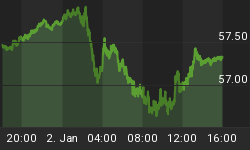Over the past year I've suggested shorting the for-profit education stocks, muni bonds, US Treasury bonds, and junk bonds. And so far, not so good. Asset prices just keep floating on the tide of liquidity pouring out of the Fed. As the saying goes, it's all one market these days, with even inversely-correlated assets like stocks and gold rising together.
But damn it, in a dysfunctional system like this the short side is, eventually, the place to be. Just as it's all one market on the upside today, it will soon be all one market in reverse, as everyone dumps paper as fast as their brokers can process the trades. The above shorts will work, and they'll be joined by lots of others including, almost certainly, the big restaurant chains.
This particular story begins with me bumping into a friend who owns a popular local restaurant and has spent the past few years buying junior silver miner stocks. Being guys, we skip the pleasantries and go straight to trying to top each other with tales of doublings and triplings and profits taken way too soon. Then he says, 'Good thing for silver too because food prices are killing me.' It seems that the wheat flour, potatoes, and tomatoes that his cooks turn into hash browns, toast and sandwiches are through the roof. 'Damn,' I say, 'maybe we should be shorting the restaurant stocks!' We both laugh, and then stop and look at each other as the realization dawns that we really should be shorting these companies, since they seem to be caught in a classic margin squeeze.
Imagine, for example, that you're running an Italian chain like Olive Garden (DRI). Pasta is your core product and wheat, its main component, has doubled since June. You have no choice but to raise menu prices, squeeze your labor costs and/or downgrade your entree quality -- or just eat the higher prices. Depending on what you choose, the result is either diminished customer experience or lower profits.

Now pretend you're running Chipotle Mexican Grill (CMG), which sells a lot of corn tortillas and taco shells. With the price of corn soaring, that part of the menu is getting more expensive and, because cows and chickens are fed mostly on corn, meat prices will eventually have to rise commensurately. (See Record US cattle, hog prices seen on shrinking herds, China.) So inputs across the board either are or will be way up. Same problem as Olive Garden, and same eventual result.

Meanwhile, the stocks of the major restaurant chains have held up pretty well, with most on the chart below still close to their 12-month highs. There are three reasons for this: First, consumers have been spending a bit more lately, giving restaurant chains pretty good year-over-year comparisons. Second, most big chains -- and the wholesalers that supply them -- probably use futures contracts and long-term sourcing deals to lock in prices months in advance, so these guys are still working with relatively cheap inputs. And third, like I said, all asset prices are up, so it shouldn't be surprising that restaurant stocks are as well.

But at some point food prices will work their way through to the menu, while rising interest rates or some other catalyst will suck some liquidity out of the stock market. Then they'll be talking about a perfect storm for the restaurants and today's prices will look like a short-seller's dream.
















